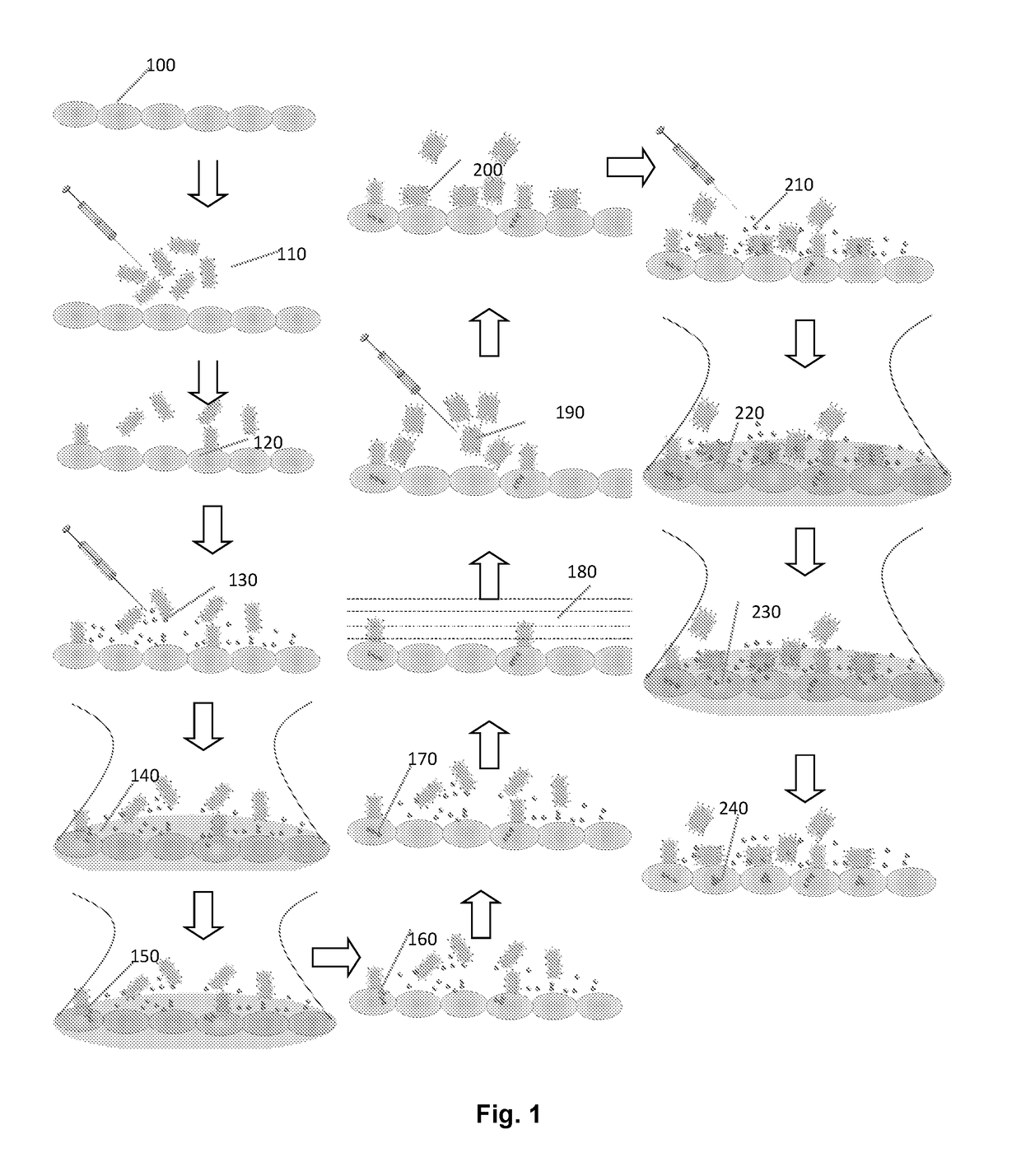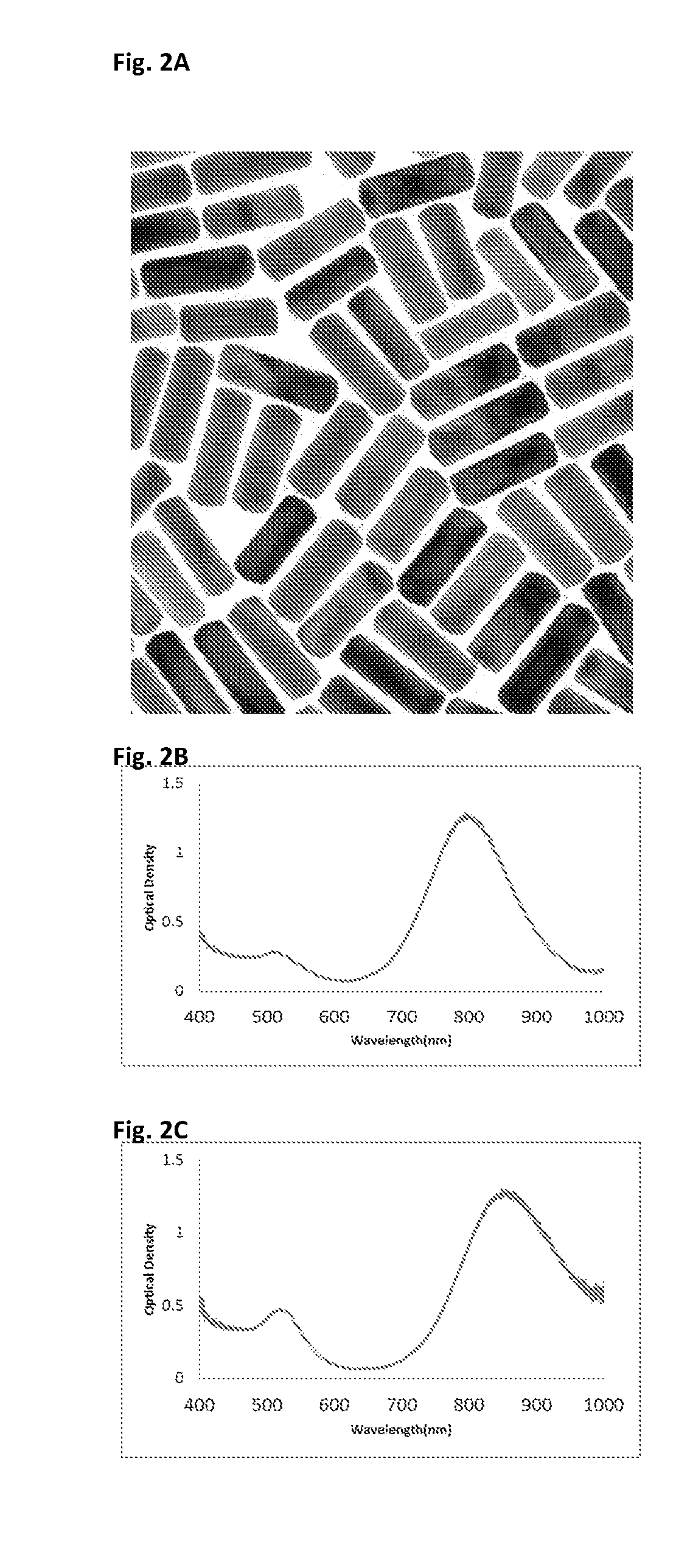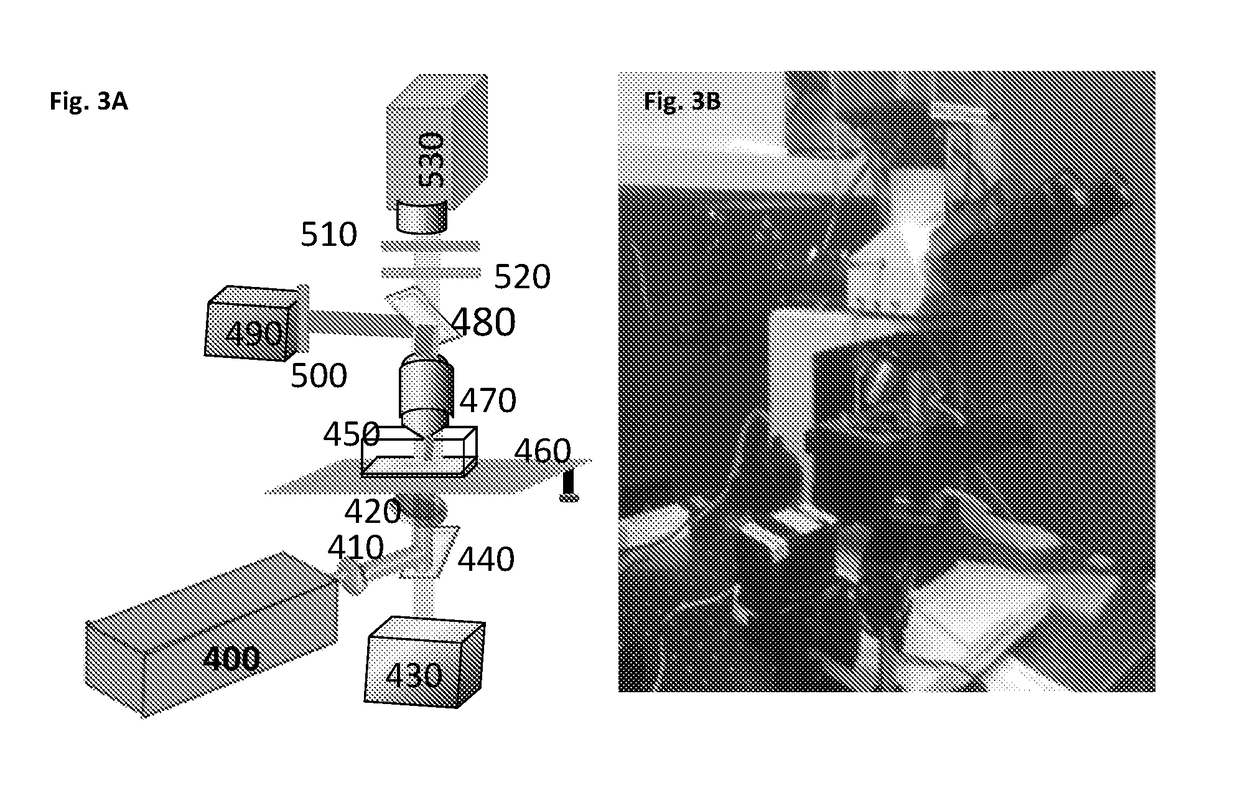Nano-Enhanced Optical Delivery of Exogenous Molecules to Cells and Tissues
a technology of exogenous molecules and optical delivery, applied in the field of nano-enhanced optical delivery of exogenous molecules to cells and tissues, can solve the problems of translating gene therapy methods, complex existing delivery systems, and complexity of existing delivery systems
- Summary
- Abstract
- Description
- Claims
- Application Information
AI Technical Summary
Benefits of technology
Problems solved by technology
Method used
Image
Examples
example 1
[0093]FIG. 1 illustrates various steps of the Nano-enhanced Optical delivery to specific groups of cells in-vitro or in a tissue in-vivo.[0094]Step 1: Gold nano-rods, functionalized to bind specific cells, are added to extracellular medium. Step 2: The functionalized gold nano-rods are allowed certain incubation period to bind to the targeted cells.[0095]Step 3: The to-be-delivered molecules such as plasmids or antibodies are added into the extra-cellular medium.[0096]Step 4: The near-infrared (NIR) laser beam wavelength is tuned to Surface Plasmon Resonance peak (SPR) of the gold nano-rods (GNR). The sample or the beam is either scanned (by scanning mirrors or stages) or spatially modulated (for example by spatial light modulator or digital micro-mirror device) to cover the targeted area. The NIR laser irradiation of the GNRs creates hot spots at the end of the rods and if bound to cell membrane, increases local membrane permeability. Step 5: Thus, the otherwise-impermeable molecul...
example 2
[0104]For spatially targeted delivery of different molecules to different types of cells, gold nano-rods with different shapes (long to short axis aspect ratios) were created. FIG. 2A shows high magnification electron microscopic image of gold nano-rods used for optical enhancement of laser beam (hot spots) at the ends of the rods. These nano-rods were functionalized with PEG, Concanavalin A or Antibodies for target-specific binding to different types of cells. Varying shape of these gold nano-rods allowed wavelength-selective Surface Plasmon enhancement. FIG. 2B shows the measured optical density of type1 gold nano-rods showing SPR peak at 800 nm. The optical density of type 2 gold nano-rods having peak at 850 nm is shown in FIG. 2C. To evaluate wavelength-selective delivery, cells were attached with functionalized gold nano rods of type 1 (SPR peak 800 nm) and irradiated with SPR-mismatched 850 nm laser beam. Propidium iodide (cell-impermeable molecule) was added to the extracellu...
example 3
[0105]To investigate nano-enhanced optical delivery into cells, a prototype was developed where multiple NIR lasers were coupled to a microscopic platform. FIG. 3A shows the schematic of a set up for nano-enhanced optical delivery into cells. The CW Laser (400) beam (800 or 850 nm) was expanded and collimated using a combination of Focusing Lenses (410) and coupled to the microscope using a dichroic mirror 1 (440). The Condenser Lens (420) focused the NIR beam on to the sample. Vertical translation of the condenser lens led to control of the irradiation spot size in the Sample chamber (450). For multiple or patterned delivery of molecules the XY stage (460) was translated. The imaging white light (430) is transmitted via the dichroic mirror 1(440). The Microscope Objective (470) collected the transmitted white light through the sample. For Fluorescence excitation of the sample a Fluorescence excitation lamp (490) was used. The choice of excitation band pass filter (500) was made bas...
PUM
 Login to View More
Login to View More Abstract
Description
Claims
Application Information
 Login to View More
Login to View More - R&D
- Intellectual Property
- Life Sciences
- Materials
- Tech Scout
- Unparalleled Data Quality
- Higher Quality Content
- 60% Fewer Hallucinations
Browse by: Latest US Patents, China's latest patents, Technical Efficacy Thesaurus, Application Domain, Technology Topic, Popular Technical Reports.
© 2025 PatSnap. All rights reserved.Legal|Privacy policy|Modern Slavery Act Transparency Statement|Sitemap|About US| Contact US: help@patsnap.com



